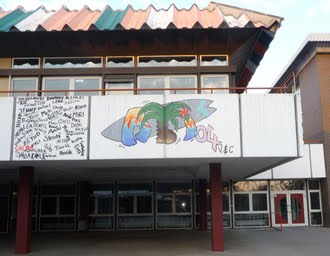
THE SECONDARY SCHOOL EXAMINATION
SYSTEMS IN COUNTRIES IN THE SEAMEO REGION
The extraordinary emphasis placed by students and parents on higher or tertiary education is one of the pre-eminent characteristics of education in the SEAMEO region. While this emphasis on higher education has been a driving force in the development of SEAMEO Member Countries, this obsession with higher education has created both educational and social problems.
Higher competition for college admission has led some secondary schools in the region to ignore formal standards of curriculum and concentrate principally on curriculum that prepares students for college entrance examinations. Hence, some teachers in higher schools give weight to memory-centered instructions that encourage cramming and memorization. It seems that there is tendency for student assessment to be merely summative, used to support administrative decisions on promotion, streaming and selection of students for tertiary education and for competition in the job market.
In many countries, the public examinations at the end of the lower and secondary stages have been severely criticized. They are seen to have distorted the basic objectives of education since performance at the examination in the form of high grades or marks has become the major goals for students, teachers and schools. In some countries, students who fail to pass the public examination get demotivated for education and become unemployed or unemployable school leavers.
In like manner, parents and the community, in particular associate children's progress in school only with their success in cognitive learning. The importance of an all-round and balanced education of children has not been fully understood and accepted by society. Even in the cognitive assessment of students, there is too heavy a dependence on only one type of assessment, which is the written test.
In this context, the SEAMEO Secretariat attempted to prepare a report on the examination systems at the secondary level in member countries of the SEAMEO region, with the hope that this would serve as springboard for further discussion, research and development with the end in view of improving the quality of education in Southeast Asian Countries.
This report covers a brief on SEAMEO, the structure of the educational systems in the SEAMEO region, and the secondary school examination systems in SEAMEO Member Countries.
The Southeast Asian Ministers of Education Organization (SEAMEO) was established in November 1965 as a chartered international organization whose purpose is to promote cooperation in education, science and culture in the Southeast Asian region. The name was chosen to reflect the need for a regional grouping, the purpose of which is to share and maximize use of resources, with collective leadership to be provided by the Ministers of Education of the Member Countries.
SEAMEO is composed of ten (10) Member Countries, namely: Brunei Darussalam, Cambodia, Lao PDR, Indonesia, Malaysia, Philippines, Singapore, Thailand Union of Myanmar and Viet Nam, and six (6) Associate Member Countries which include Australia, Canada, France, Germany, Netherlands and New Zealand. The Organization has 11 established Regional Centres/Network of excellence, namely BIOTROP, INNOTECH, RECSAM, RELC, RIHED, SEARCA, SPAFA, TROPMED Network namely: TROPMED/ Indonesia, TROPMED/Malaysia, TROPMED/Philippines, TROPMED/Thailand, VOCTECH, SEAMEO Regional Training...
RELATED VIDEO




 A comprehensive school is a state school that does not select its intake on the basis of academic achievement or aptitude. This is in contrast to the selective school system, where admission is restricted on the basis of a selection criteria. The term is commonly...
A comprehensive school is a state school that does not select its intake on the basis of academic achievement or aptitude. This is in contrast to the selective school system, where admission is restricted on the basis of a selection criteria. The term is commonly...








